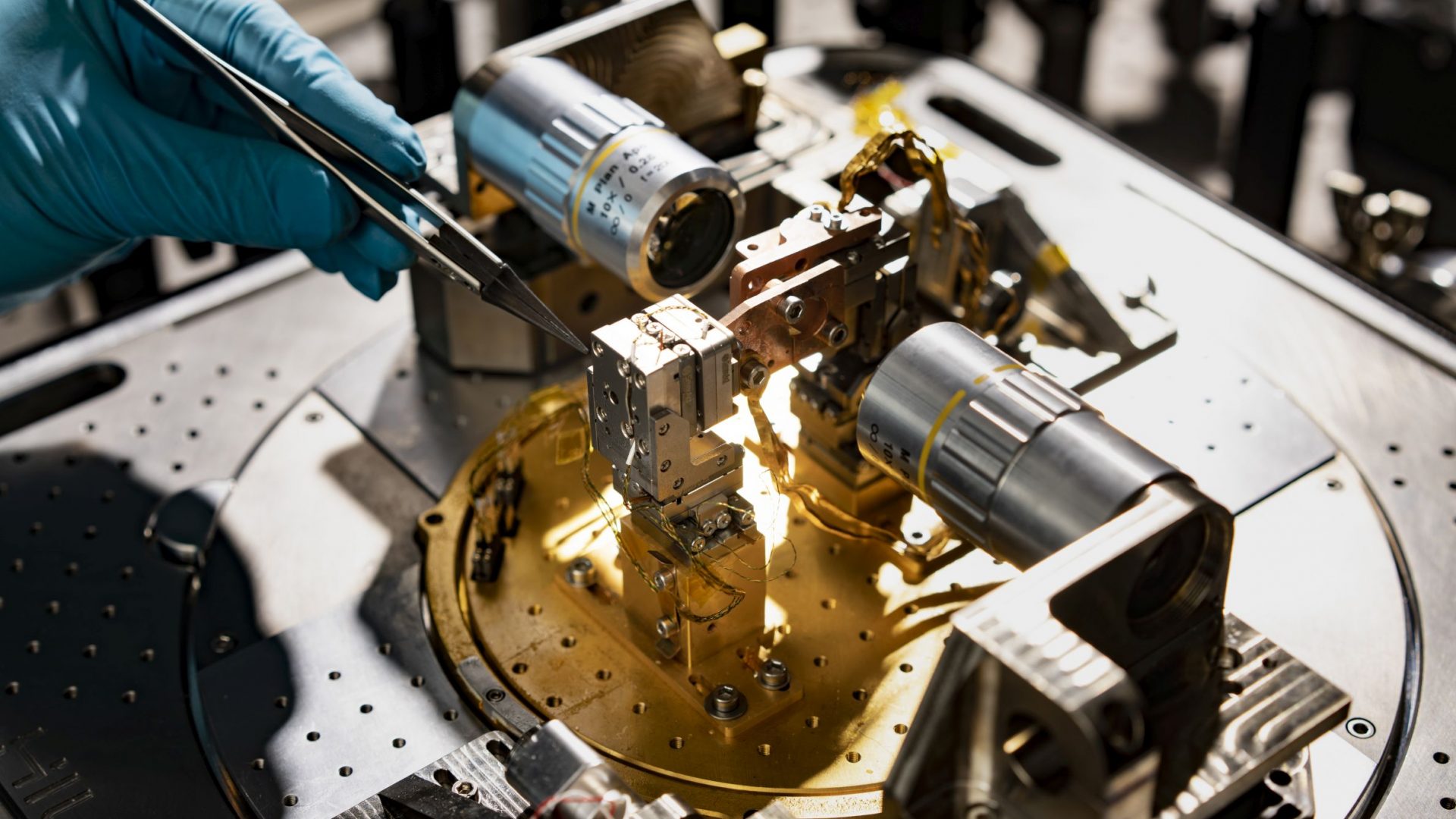Information in Matter
Physics and the era of information
We live in the era of information, which presents new opportunities to science, yet also significant challenges due to the demands on storage, processing, communication and energy demands. Several parallel developments in science highlight this:
- New physical paradigms emerge to handle information, such as DNA- and protein-based computing, analog optical computing, mechanical computing, quantum information, and physical implementations of artificial neural networks.
- Very powerful computing now allows to understand materials and processes of unprecedented complexity. Artificial intelligence fuels novel forms of design and control.
- The language of information is of fundamental use in understanding of emergent phenomena, such as the complex behavior of frustrated systems, like amorphous materials and crumpled sheets.
Information in Matter
The AMOLF Information in Matter theme aims to advance our understanding of the fundamental physical mechanisms of information gathering, transport and processing in inanimate and living matter. We aim to push the design and limits of future, unconventional, information technologies, and to explore new paradigms such as learning and adaptive materials.
Since information always resides in physical systems, its creation, processing, preservation and removal are bounded by the laws of physics. Understanding the general limits and design principles of information in matter requires concepts that span disciplines, such as non-linearity, reciprocity and time-reversibility, quantum entanglement, cooperativity, noise, non-equilibrium stochastic thermodynamics, and learning. The AMOLF research program in Information in Matter brings researchers from different disciplines together, addressing shared questions about the limits of information in matter in diverse physical systems, ranging from biological systems to mechanical metamaterials, to classical and quantum nanophotonic systems.
Our research questions
We explore the gathering, processing, and transduction of information by light, biomolecules, and mechanics. We unite studies on emergent computing in complex matter – from crumpled sheets to the brain – with the design of systems that gather and process information by, e.g., light and acoustics. Our key questions divide in two pillars:
- Information processing revolves around logic, algorithms, learning and computation in matter systems. For instance, we ask which analog image processing operation and reservoir computing can be performed by optical or acoustic metasurfaces that act on data encoded in complex optical wavefronts. Can we build complex nonlinear networks to solve NP-hard problems, for instance programming nonlinear optical microcavity arrays? Do frustrated materials, such as crumpled sheets, or mechanical metamaterials composed of bistable motifs, process information? How do we apply studies of real neural networks in living organisms to design materials that can learn to perform tasks, like recognizing sounds? How close can noisy and resource-limited systems, such as cellular systems come to fundamental limits on measurement and prediction? Can we leverage stochasticity as a resource in designed matter, such as in optics where we can inject noise at will?
- Sensing, gathering, and transducing information deals with crucial questions about the input, output, and conversion of information degrees of freedom. What sets fundamental limits to sensor performance, measurement and metrology? This question appears in all of our systems, from biochemical networks, to optical metrology, to mechanical oscillator systems in classical and quantum regimes. How can we evade such fundamental limits, leveraging noise, gain, nonlinearity, nonreciprocity, and entanglement? Crucial for ultimate information systems will also be the ability to transmit and transduce information, converting information in one degree of freedom to another. During this process, how can information be protected from (thermal) fluctuations, scattering, dissipation, and decoherence? What is the minimum energy required to, for instance, switch an optical memory, and can we coherently transduce quantum information from photons to other quantum systems?
More information
Do you have questions about the Information in Matter research program? Then please contact Pieter Rein ten Wolde (email: P.t.Wolde@amolf.nl).


